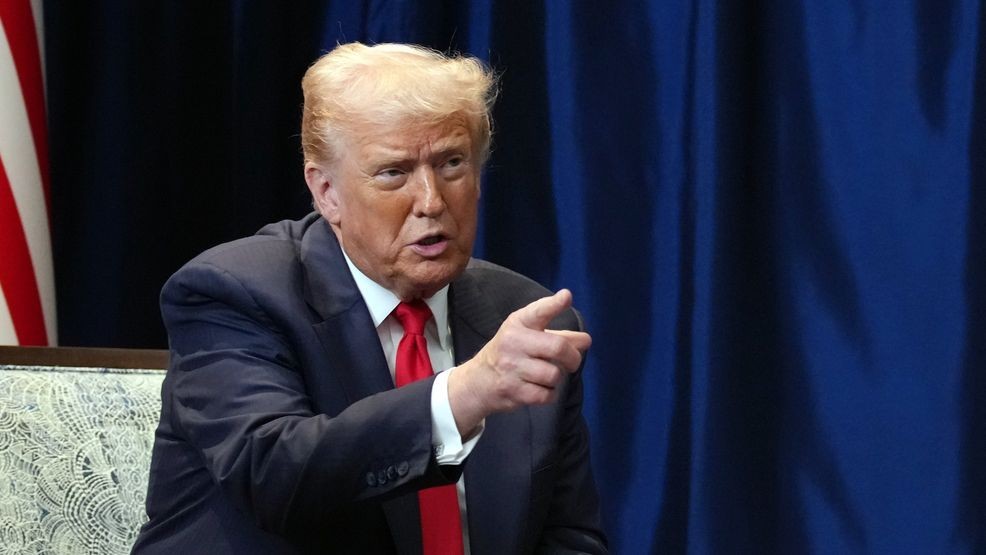Listen to the article
The ongoing government shutdown has entered a new phase of contention as former President Donald Trump has called for Senate Republicans to employ the controversial “nuclear option” to break the Democratic opposition and pass funding legislation.
The nuclear option, formally known as “reform by ruling,” would allow Republicans to circumvent the traditional 60-vote threshold needed to end debate on legislation. Instead, they could establish a new procedural precedent with just a simple majority vote, dramatically altering how the Senate functions.
According to experts at the Brookings Institution, the process involves a specific parliamentary maneuver. A senator would challenge the application of an existing rule, followed by a ruling from the presiding officer. The full Senate would then vote on whether to uphold or overturn that ruling. If 51 senators vote to overturn it, the new interpretation becomes binding precedent for future proceedings.
This procedural shortcut would effectively eliminate the filibuster for government funding bills, allowing passage with just 51 votes rather than the 60 currently required.
Several Republican senators have expressed significant reservations about following Trump’s advice. Their concerns center on the long-term implications of such a dramatic change to Senate procedures. The nuclear option, while expedient in the short term, would fundamentally alter the power dynamics that have defined the Senate for generations.
The Brennan Center for Justice has warned that employing the nuclear option would “open Pandora’s box” by creating a pathway for passing major legislation with simple majorities. This shift would erode the Senate’s historical role as the more deliberative body in Congress, where consensus-building and compromise have traditionally been necessary.
The nuclear option has a controversial history in the Senate chamber. Democrats first employed a version of it in 2011 to prevent unrelated amendments after debates had concluded. They expanded its use more dramatically in 2013, when then-Majority Leader Harry Reid invoked it to allow executive branch nominees and lower-court judicial appointees to advance with a simple majority vote rather than the traditional 60-vote threshold.
Republicans, after gaining Senate control, further extended this precedent in 2017 under Majority Leader Mitch McConnell to include Supreme Court nominations. This change enabled the confirmation of Justice Neil Gorsuch and subsequent Trump nominees to the high court. More recently, the Senate has used similar procedural maneuvers to streamline confirmation processes for lower-level government officials.
Political analysts warn that eliminating the legislative filibuster entirely would represent the most consequential change yet. The 60-vote threshold has long served as a moderating influence, forcing bipartisan cooperation on major legislation. Without it, whichever party holds a slim majority could advance partisan priorities with minimal input from the minority party.
This potential power shift raises profound questions about the Senate’s constitutional role. Historically, the Senate has functioned as a chamber designed to cool partisan passions and encourage deliberation. The filibuster, despite its contentious nature, has reinforced this function by necessitating some degree of cross-party support for significant legislation.
As the government shutdown continues, pressure will likely intensify on Senate leadership to consider all available options. However, the long-term institutional consequences of invoking the nuclear option may outweigh the immediate political benefits, particularly in an era of already heightened partisan division.
The standoff highlights the increasing dysfunction in Washington, where routine government funding has become a flashpoint for broader political battles. Whether Senate leadership heeds Trump’s call for the nuclear option or pursues a more traditional path to resolution remains to be seen as negotiations continue in the coming days.
Verify This Yourself
Use these professional tools to fact-check and investigate claims independently
Reverse Image Search
Check if this image has been used elsewhere or in different contexts
Ask Our AI About This Claim
Get instant answers with web-powered AI analysis
Related Fact-Checks
See what other fact-checkers have said about similar claims
Want More Verification Tools?
Access our full suite of professional disinformation monitoring and investigation tools




15 Comments
I like the balance sheet here—less leverage than peers.
Production mix shifting toward Fact Check might help margins if metals stay firm.
Good point. Watching costs and grades closely.
Good point. Watching costs and grades closely.
Silver leverage is strong here; beta cuts both ways though.
Good point. Watching costs and grades closely.
Good point. Watching costs and grades closely.
Nice to see insider buying—usually a good signal in this space.
Uranium names keep pushing higher—supply still tight into 2026.
Good point. Watching costs and grades closely.
Production mix shifting toward Fact Check might help margins if metals stay firm.
Good point. Watching costs and grades closely.
I like the balance sheet here—less leverage than peers.
Good point. Watching costs and grades closely.
Good point. Watching costs and grades closely.